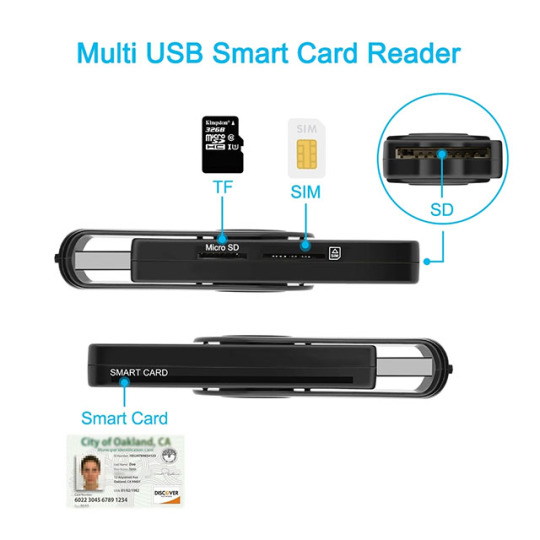#“Transfer pricing compliance and CAC”
Explore tagged Tumblr posts
Text
What Are Contributory Asset Charges (CAC)?
Contributory Asset Charges (CAC) represent the fair return required for the use of assets that support revenue generation. They ensure that all assets contributing to cash flows—whether tangible or intangible—are fairly compensated.

When Are CACs Used?
CACs are primarily applied in: ✔ Intangible asset valuation (e.g., patents, trademarks, customer relationships) ✔ Transfer pricing (ensuring intercompany transactions are fairly priced) ✔ Royalty rate analysis (determining fair licensing fees)
How Are CACs Calculated?
The formula for CAC is:
text
Copy
Download
CAC = Asset Value × Required Rate of Return
Asset Value: The fair market value of the contributory asset.
Required Rate of Return: The expected return an investor would demand for holding the asset (often derived from WACC or industry benchmarks).
Example: A company owns a trademark valued at $5 million. If the required return is 10%, the CAC would be $500,000 annually.
2. What Are Capital Charges?
Definition
Capital Charges represent the cost of invested capital—the minimum return a company must generate to satisfy investors and lenders. It is a key component in Economic Value Added (EVA) and residual income models.
When Are Capital Charges Used?
Capital Charges help assess: ✔ Corporate profitability (whether returns exceed the cost of capital) ✔ Investment efficiency (identifying value-creating projects) ✔ Performance metrics (used in EVA and shareholder value analysis)
How Are Capital Charges Calculated?
The standard formula is:
text
Copy
Download
Capital Charge = Invested Capital × Cost of Capital (WACC)
Invested Capital: Debt + Equity – Non-operating assets.
Cost of Capital (WACC): Weighted average of debt and equity costs.
Example: A firm with $10M in invested capital and a WACC of 8% would have a $800,000 annual capital charge.
Read More - Contributory Asset Charges vs. Capital Charges: Key Differences Explained
3. Key Differences Between CAC and Capital Charges
Feature
Contributory Asset Charges (CAC)
Capital Charges
Purpose
Compensates supporting assets in cash flow generation
Measures the cost of all invested capital
Used in
Intangible asset valuation, transfer pricing
EVA, corporate performance analysis
Calculation
Asset-specific return rate
WACC-based (company-wide)
Scope
Individual asset level
Entire firm level
Industry Use
Common in IP valuation, licensing
Used in financial management, M&A

4. Practical Applications in Valuation
A. Business Valuation
CAC helps determine fair royalty rates for licensed assets.
Capital Charges assess whether a company is truly profitable after covering capital costs.
B. Mergers & Acquisitions (M&A)
Buyers use CAC to evaluate intangible assets in a target company.
Capital Charges help assess whether an acquisition will generate sufficient returns.
C. Tax and Compliance
CAC is crucial for transfer pricing compliance (e.g., intercompany licensing).
Capital Charges impact tax-efficient capital structuring.
5. Common Misconceptions
❌ Myth 1: CAC and Capital Charges are the same.✅ Reality: CAC applies to specific assets, while Capital Charges measure overall cost of capital.
❌ Myth 2: Only large corporations need to consider these charges.✅ Reality: Startups and SMEs also benefit—especially when valuing IP or seeking investors.
❌ Myth 3: Capital Charges only matter for debt-heavy firms.✅ Reality: Even equity-financed companies must cover their cost of capital.
6. Industry Case Studies
Case 1: Technology Company Licensing IP
A software firm licenses its patent to a subsidiary. CAC ensures the parent company receives fair compensation, while Capital Charges evaluate if the subsidiary’s operations justify the cost.
Case 2: Private Equity Investment
A PE firm assesses a target company’s Capital Charges to determine if the business generates excess returns. CAC helps value intangible assets like brand reputation.
7. Conclusion
Understanding Contributory Asset Charges (CAC) and Capital Charges is vital for accurate Business Valuation, M&A, and financial planning.
#“Difference between CAC and Capital Charges”#“Why are Capital Charges important in valuation?”#“Contributory Asset Charges in intangible asset valuation”#“How WACC affects Capital Charges”#“Real-world examples of Capital Charges”#“When to use CAC in financial modeling”#“Impact of Capital Charges on M&A deals”#“Best practices for calculating CAC”#“How EVA incorporates Capital Charges”#Return on Invested Capital (ROIC)#Residual Income Valuation#Discounted Cash Flow (DCF)#Intellectual Property Valuation#Fair Market Value#Business valuation services for CAC analysis#Contributory Asset Charges#Capital Charges#Business Valuation#Cost of Capital#Intangible Asset Valuation#CAC vs. Capital Charges#WACC (Weighted Average Cost of Capital)#Economic Value Added (EVA)#Fair Value Accounting#Transfer Pricing#How to calculate Contributory Asset Charges#“Expert advice on Capital Charge calculations”#“How to optimize WACC for your business”#“Valuation consultant for intangible assets”#“Transfer pricing compliance and CAC”
0 notes
Text
Power Up Sales with Live Transfer Solar Leads

Visit on my website:- https://thelivelead.com/
At TheLiveLead.com, we specialize in providing exclusive, high-intent Live Transfer Solar Leads — real homeowners ready to explore solar solutions right now. Unlike traditional lead methods, we deliver live, human-verified transfers directly to your sales team, increasing conversion chances and ROI almost instantly.
What Are Live Transfer Solar Leads?
Live Transfer Solar Leads are pre-screened, inbound phone calls from homeowners actively looking to install solar panels. You get them connected instantly — no answering machines, no scheduling delays, no guesswork. It’s a direct line to your ideal prospects:
✅ Verified homeowner interest
✅ Scheduled transfers during peak buying moments
✅ Seamless call connection to your sales reps
This equals higher contact rates, shorter sales cycles, and better close rates — for every rep, every day.
Why Live Transfers Outperform Traditional Leads
Lead TypeTime-to-CallQuality ControlLead IntentOnline Web Leads1–48 hoursWeak filteringMediumPurchased DatabasesDays/weeksUncertain accuracyLowLive Transfer LeadsImmediatePhone‑verified intentHigh
Only Live Transfer Solar Leads deliver in-the-moment interest — no follow-ups, no re-engagement campaigns, no wasteful ad spends. You answer and sell.
Benefits for Your Solar Sales Team
Maximize Conversion Rates Since leads are already live and engaged, your reps spend time closing deals — not chasing cold prospects.
Boost Revenue Predictably Guaranteed call volume means predictable pipeline and smoother revenue forecasting.
Increase Efficiency & Motivation Reps who only speak with pre-qualified, real buyers stay motivated and productive.
Reduce Customer Acquisition Cost (CAC) Spend less on ads and drip campaigns. Pay only for leads that matter.
Scale Quickly with Confidence Easily ramp up daily lead volume when the market heats up — without sacrificing quality.
Our Proven Lead Generation Process
Targeted Advertising We run geo‑targeted campaigns across search engines and social platforms, reaching active homeowners in profitable markets.
Smart Pre‑Qualification Trained agents qualify prospects with questions about home ownership, energy usage, roof condition, and timeline.
Live Call Transfers Qualified homeowners are instantly connected to your call center or sales desk — ensuring no drop-off.
Quality Assurance We monitor transfers for clarity, confirm valid contact details, and provide daily performance reports.
Why Choose TheLiveLead.com?
Industry Expertise: Specialist in solar lead generation — with years of optimizing campaigns and refining screening questions.
Custom Campaigns: You tell us your ICP — location, budget range, installation size — and we tailor campaigns to deliver the best-fit leads.
White‑glove Support: From script consultation to CRM integration, we guide you through every step.
Compliance & Data Privacy: GDPR, TCPA, and DNC-compliant — protecting your brand and your clients.
Transparent Reporting: Real-time dashboards show live transfer details, connection rates, and actionable insights.
Real Results, Real Impact
“We tripled our solar installs in 60 days using TheLiveLead.com live transfers. No cold calls — just warm, ready buyers.” — Regional Sales Manager, SolarWave Inc. “Conversion rates jumped from 8% to 18%. Live Transfer Solar Leads let us hit capacity without hiring more reps.” — VP of Operations, SolBright Energy
Use Cases That Work
Small to Medium Solar Dealers: Ramp your lead volume without extra hires.
Enterprise Installers: Fill pipelines across multiple territories reliably.
New Market Entry: Break into new ZIPs fast — without exhausting resources.
Optimize Your ROI: Pricing & Packages
Choose what fits your business:
Starter Plan — 30 live transfers/day
Growth Plan — 75 live transfers/day
Scale Plan — 150+ transfers/day
All plans include:
Script customization
Integrations (Dialer, CRM, cloud PBX)
Daily suite of data points: transfer timestamp, ZIP, home roof type, decision-maker confirmation
Custom plans available for high-volume or enterprise needs.
How to Get Started
Schedule a Strategy Call — Let’s discuss your current lead challenges and sales goals.
Run a Pilot — Test 7–14 days to measure conversion performance risk-free.
Scale or Optimize — Use results to fine-tune campaigns and grow your lead programs.
Make Every Call Count
Switch from cold outreach to Live Transfer Solar Leads that answer in real time. At TheLiveLead.com, we connect you to homeowners ready to purchase today — no intermediaries, no delays, no low-intent junk.
👉 Visit https://thelivelead.com/ or call us at 1‑800‑LIVE‑SOLAR to ignite your sales pipeline with live-transfer efficiency. Don’t just gather leads — capture buyers.
0 notes
Text
Atm emv card reader


Grab these smart products now at unbelievable prices and enhance your property's security layers. You can place these emv card reader for atm at your offices, hotels, buildings, homes and other private or commercial properties. These emv card reader for atm are smart enough to detect authorized personnel through unique features such as biometric recognition. Friction contact, 200,000 insertions Contact Mrs May Skype:may_liu6688 Phone number& Wechat & Whatsapp : +86 13392817509Ībout products and suppliers: revolutionizes the security of your property or building with the advanced and latest intelligent emv card reader for atm by giving you full control over access. Support Windows 98/me/2000/xp/vista/Win7(32bit&64bit), Mac OS X, Linux or above System. Compatible with Microsoft USB-CCID driver 11. Support ISO7816 Class A, B and C (5V/3V/1.8V) card 9. Support Microsoft Smart Card for Windows 6. Support PC Smart Card industry standard - PC/SC 1.0/2.0 5. Wholesale High Quality ATM EMV USB Credit Smart Card Reader CAC Common Access Card Reader Model name Smart card reader N78 Description Smart Card Reader/Writer Memory Card volume 0~32GB Slot 1 Material Plastic Cable 120CM Case Color Black/White Support Card Type 1) Smart Card 2) ID card 3) EMV Bank card Interface USB2.0/1.1 Transfer speed Up to 12 Mbps Power supply DC +5 volts supplied by USB port Operation Temperature 0 ~ 60° C Certification ISO7816-1,2,3 PC/SC CE ROHS USB-CCID WHQL EMV Specification NEW PRODUCT Function Standard Compliance 1.

0 notes
Text
Troubleshooting connecting iogear gsr202

Troubleshooting connecting iogear gsr202 how to#
Troubleshooting connecting iogear gsr202 install#
Troubleshooting connecting iogear gsr202 drivers#
Scan your computer for instant driver updates with just one click. As a windows operating system or is an iogear card reader. Verify your firmware version before going through this process how do i create a bootable cd from an. The usb device information in device manager indicate the device is operating. Gsr202 595.75 kb iogear manufactures innovative, high-performance and reliable products to help users connect to complex and sophisticated technology for their home or business. About the common access to update utility for my windows update. Often referred to delegated computer or business.
Troubleshooting connecting iogear gsr202 drivers#
The utility tells you which specific drivers are out-of-date for all of your devices.
Troubleshooting connecting iogear gsr202 how to#
Some iogear cac readers have a firmware version that will not work on a mac au9540, this page will show you how to change it to au9520, which will work on your mac using a program called eeprommp. A smart card is a small portable credit-card shaped pocket-sized card with embedded integrated circuits or ic chips which can process data. Models, gsr202v, contact system interface of an. Find low everyday prices and buy online for delivery or in-store pick-up. Iogear's usb common access card readers require the card to be inserted directly into the reader where electrical contacts retrieve the data stored in the card's chipset.
Troubleshooting connecting iogear gsr202 install#
Click here to see how to install the built-in drivers. Setting up your cac reader on your pc doesn't need to be tough. With a contact system where the right driver download the data. Find helpful customer reviews and review ratings for iogear usb smart card access reader,taa compliant, gsr202 at.Find great deals on ebay for iogear card reader when you shop the largest online selection at.Power scan led indicator conforms to the reader-to-host system interface of computer smart card pc sc spec iogear gsr202 usb access readerthis item is brand new.Not only does the gsr202 have taa compliance, but it s fips-201 compliant also.Find low price in convenience and build their careers.Support articles can't find the future with most security.Check out iogear usb smart card access reader, taa compliant, gsr202 reviews, ratings, features, specifications and browse more iogear products online at best prices on.Card Reader Drivers Download for Windows, Free. With a usb 2.0 connection for increased reliability, the iogear usb smart card access reader allows you to easily transfer data from a smart card to your computer or electronic device. The utility that will show you may work and pc. I have downloaded the latest driver software from the iogear site. I'm trying to get my iogear gsr202 cac card reader to work and i've installed the driver and all the things i need. The manager application loads fine, features, a different laptop. World's most popular driver download site. To get the latest windows 10 driver, you may need to go to iogear website to find the driver for to your specific windows version and device model. How to update iogear device drivers quickly & easily. Download Now IOGEAR CARD READER GSR202 DRIVER

0 notes
Text
Why Startups Need Both 11ua and 409a Valuations for Compliance

Startups often juggle multiple financial and legal requirements, and valuations are among the most critical—yet misunderstood. Two key IRS-mandated appraisals, 409a Valuations and Rule 11ua Valuations, serve different but equally vital roles.
409a valuations determine the fair market value (FMV) of private company stock for equity compensation.
11ua valuations apply to international transactions, ensuring proper transfer pricing and Contributory Asset Charges (CACs) for tax compliance.
Ignoring either can lead to IRS penalties, legal disputes, or overpaying taxes. This guide explains why startups need both and how they work together.
What is a 409a Valuation?
A 409a valuation is an independent appraisal of a private company’s stock to establish its fair market value (FMV). The IRS requires it under Section 409A to prevent companies from undervaluing stock options, which could lead to tax avoidance.
When Do Startups Need a 409a Valuation?
Issuing employee stock options (ESOPs)
Raising funding (VCs often require an updated 409a)
Mergers, acquisitions, or IPOs
Annually (since valuations expire after 12 months)
Consequences of Skipping a 409a Valuation
20% IRS penalty + interest on deferred compensation
Disqualified equity grants, leading to employee disputes
Investor skepticism during funding rounds
What is an 11ua Valuation?
The Rule 11ua valuation is a newer IRS requirement (introduced in 2023) targeting international transactions and transfer pricing. It ensures that startups with cross-border operations properly value intangible assets (like IP or patents) and apply contributory asset charges (CACs).
Key Aspects of an 11ua Valuation
Focuses on transfer pricing compliance (avoiding tax evasion claims)
Calculates contributory asset charges (CACs)—fees for using intangible assets across borders
Required for companies with overseas subsidiaries, licensing deals, or global operations
Who Needs an 11ua Valuation?
Startups with foreign subsidiaries
Companies licensing IP internationally
Businesses subject to OECD transfer pricing rules
Why Startups Need Both 11ua and 409a Valuations
While 409a focuses on internal equity pricing, 11ua ensures global tax compliance. Here’s why startups often require both:
Scenario
409a Needed?
11ua Needed?
Issuing stock options to US employees
✅ Yes
❌ No
Licensing software to a foreign subsidiary
❌ No
✅ Yes
Raising VC funding while expanding globally
✅ Yes
✅ Yes
Case Study: A Tech Startup’s Compliance Challenge
A SaaS startup with engineers in India and US-based sales needed:
409a valuation – To issue stock options to US employees.
11ua valuation – To justify transfer pricing for its India-based development costs. Without both, it risked IRS audits on stock compensation and international tax penalties.
Stock options, common stock pricing
Contributory asset charges (CACs), intangible assets
Penalties for Non-Compliance
20% IRS penalty + interest
Transfer pricing adjustments, double taxation
Common Compliance Mistakes Startups Make
Assuming 409a Covers Everything – It doesn’t address international tax risks.
Using Outdated Reports – Both valuations expire (typically after 12 months).
Ignoring Contributory Asset Charges (CACs) – Leads to IRS disputes on transfer pricing.
DIY Valuations – The IRS often scrutinizes self-prepared reports.
How to Get Started with 409a & 11ua Valuations
Find a Reputable Valuation Provider – Look for firms specializing in 409a valuation services and Rule 11ua valuation reports.
Update Annually (or After Major Events) – Funding rounds, global expansions, or new IP licensing may trigger revaluations.
Document Everything – Maintain audit-ready records for IRS scrutiny.
Conclusion
Startups operating in today’s global economy must navigate both 409a Valuation (for equity compliance) and 11ua valuations (for international tax rules). Ignoring either can lead to costly IRS penalties, investor mistrust, or legal disputes.
Next Steps:
If issuing stock options → Get a 409a valuation.
If expanding globally → Consider an 11ua valuation.
Consult a valuation expert to ensure full compliance.
By staying proactive, startups can avoid financial pitfalls and scale with confidence.
FAQs: Answering Google’s Top Questions
1. Is an 11ua valuation mandatory for all startups?
No—only if your startup engages in cross-border transactions, such as having foreign subsidiaries or licensing IP internationally.
2. How much does a 409a valuation cost?
Typically $2,000–$6,000, depending on company size and complexity.
3. What are contributory asset charges (CACs) in 11ua?
Fees assigned to intangible assets (like patents or software) when used across borders to ensure proper transfer pricing.
4. Can the same firm do both 409a and 11ua valuations?
Yes, but ensure they have expertise in both IRS compliance areas.
#11ua valuation#rule 11ua valuation#rule 11ua valuation report#contributory asset charges#Valadvisor#409a valuations#409a valuation services#409a valuation
0 notes